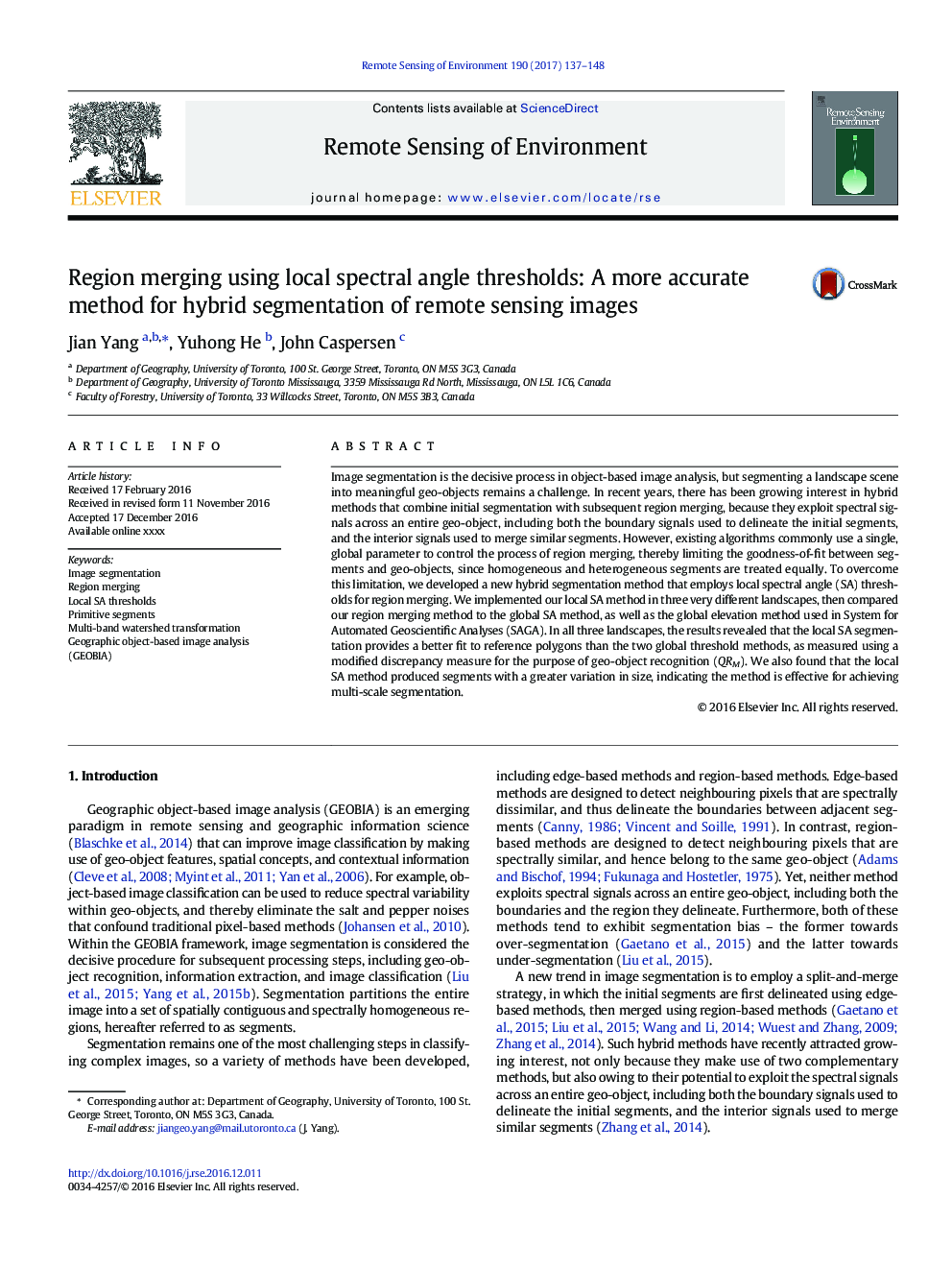| Article ID | Journal | Published Year | Pages | File Type |
|---|---|---|---|---|
| 5754778 | Remote Sensing of Environment | 2017 | 12 Pages |
Abstract
Image segmentation is the decisive process in object-based image analysis, but segmenting a landscape scene into meaningful geo-objects remains a challenge. In recent years, there has been growing interest in hybrid methods that combine initial segmentation with subsequent region merging, because they exploit spectral signals across an entire geo-object, including both the boundary signals used to delineate the initial segments, and the interior signals used to merge similar segments. However, existing algorithms commonly use a single, global parameter to control the process of region merging, thereby limiting the goodness-of-fit between segments and geo-objects, since homogeneous and heterogeneous segments are treated equally. To overcome this limitation, we developed a new hybrid segmentation method that employs local spectral angle (SA) thresholds for region merging. We implemented our local SA method in three very different landscapes, then compared our region merging method to the global SA method, as well as the global elevation method used in System for Automated Geoscientific Analyses (SAGA). In all three landscapes, the results revealed that the local SA segmentation provides a better fit to reference polygons than the two global threshold methods, as measured using a modified discrepancy measure for the purpose of geo-object recognition (QRM). We also found that the local SA method produced segments with a greater variation in size, indicating the method is effective for achieving multi-scale segmentation.
Related Topics
Physical Sciences and Engineering
Earth and Planetary Sciences
Computers in Earth Sciences
Authors
Jian Yang, Yuhong He, John Caspersen,
